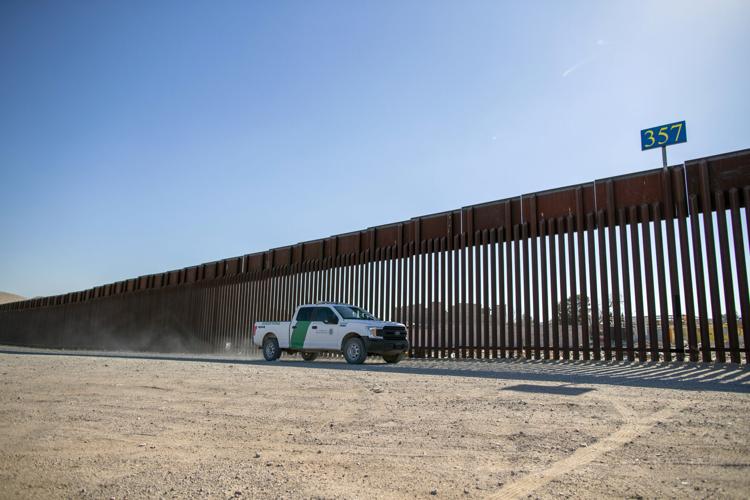
SANTA TERESA, N.M., Oct. 9, 2025 — The Department of Homeland Security (DHS) has issued an order to accelerate construction of border barriers along more than 100 miles of New Mexico’s border with Mexico, exempting itself from over two dozen federal laws in the process. The expedited project will stretch from Sunland Park to the eastern edge of the state’s bootheel near Antelope Wells, with construction considered effective as of Oct. 8, 2025.
“There is presently an acute and immediate need to construct additional physical barriers and roads in the vicinity of the border of the United States in order to prevent unlawful entries,” the DHS order stated in the Federal Register.

The order explicitly waives requirements under 27 federal laws, including the Endangered Species Act, the Clean Water Act, and the National Environmental Policy Act, echoing previous waivers granted for border construction projects in Arizona and New Mexico, such as at Mount Cristo Rey.
DHS Director Kristi Noem recently visited the border at Santa Teresa to announce additional measures, including painting the barriers black — a move officials claimed would deter crossings. At the event, government officials noted that border crossings have fallen 98% from 2,400 incidents in 2023 to an average of 39 apprehensions in 2025.
U.S. Rep. Gabe Vasquez (D-NM), whose district covers the southern New Mexico border, acknowledged the importance of border security but questioned the efficacy of a wall in all areas.
“Securing our border is a top priority,” Vasquez said. “However, as [Defense] Secretary [Pete] Hegseth acknowledged when I questioned him at a recent committee hearing, a wall simply doesn’t make sense or promote public safety in every case. In those areas, I support utilizing technology like towers, sensors, and aerial systems that are better for the natural environment, wildlife corridors, and public land access; are a better use of taxpayer dollars; and are better for our national security.”
Environmental groups and conservation advocates raised alarms over the potential ecological damage.
Laiken Jordahl, Southwest conservation advocate at the Center for Biological Diversity, said the wall would severely fragment habitats for bighorn sheep, cougars, and other wildlife.
“I mean, basically, they could show up tomorrow with bulldozers and break ground without consulting any wildlife experts, historical experts, or any of the tribes that have resources in these areas,” Jordahl said. “The waiver gives them just an unbelievable amount of power to inflict as much damage as possible with zero accountability.”
Critics argue that the waivers not only bypass environmental protections but also exclude public input and tribal consultations, leaving communities and ecosystems vulnerable.
The new construction order is part of an ongoing effort by the federal government to hasten border barrier projects along the U.S.-Mexico border. Past border wall initiatives have faced legal challenges and environmental scrutiny, particularly in sensitive desert and wildlife habitats.

While DHS argues that physical barriers are essential for preventing illegal crossings, experts and legislators highlight alternative strategies, including aerial surveillance, sensors, and technology-enhanced monitoring, as more cost-effective and environmentally responsible solutions.
The expedited construction is expected to significantly accelerate project timelines, though opponents warn it could lead to irreversible ecological damage and legal disputes.
“This move sets a precedent for bypassing environmental and public accountability entirely,” Jordahl added. “The long-term consequences for species, ecosystems, and tribal lands could be catastrophic.”
Construction crews are expected to begin work immediately under the waivers. Federal agencies and environmental groups are closely monitoring the developments, with potential lawsuits anticipated to challenge the expedited process.
For ongoing updates on the project and its environmental impact, local residents and stakeholders are encouraged to follow DHS announcements and advocacy groups monitoring the border region.
Originally reported by Danielle Prokop in Source New Mexico.